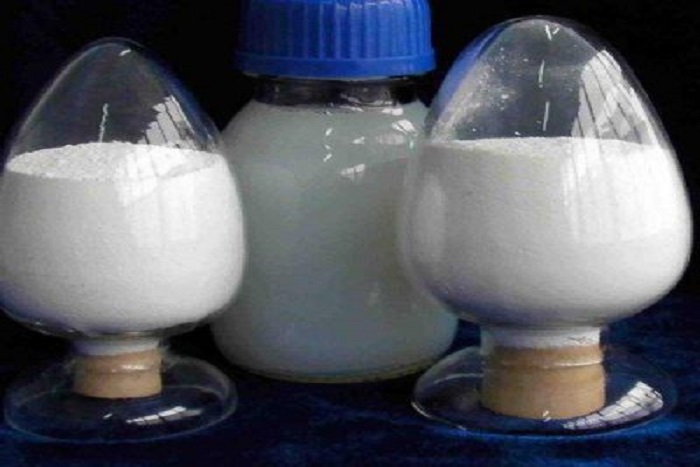Update:Polyurethanes (PU) are a class of polymers whose main chain contains -NHCOO- repeating structural units. It is formed by...
Polyurethanes (PU) are a class of polymers whose main chain contains -NHCOO- repeating structural units. It is formed by the polymerization of isocyanates (monomers) and hydroxyl compounds. Due to the strong polar urethane group, it is insoluble in non-polar groups and has good oil resistance, toughness, wear resistance, aging resistance and adhesion. Materials suitable for a wide temperature range (-50–1500°C) can be prepared from different raw materials, including elastomers, thermoplastic resins and thermosetting resins. Not resistant to hydrolysis at high temperature, nor resistant to alkaline media.
The addition of
polyurethane resin to the ink can improve the wettability of the ink to the pigment, and the film-forming property is good, and the ink film is firm and wear-resistant. It is mostly used in the manufacture of offset printing and water-based inks, but the price is high.
Solvent-based polyurethane ink binder has the advantages of easy use, stable performance, strong adhesion, excellent gloss, good heat resistance, etc. It can meet the requirements of various printing methods, especially for screen printing, plastic packaging and composite films, etc. aspect.
The polyurethane resin used in the ink is generally made of polyester/polyether polyol and isocyanate, with a molecular weight of about 20,000 to 40,000. Its solvent is mainly benzene, ketone, ester solvent as the main solvent. In the research and development process, according to the environmental protection requirements of ink factories and printing factories, ketone ester solvents or alcohol ester solvents can be used to prepare corresponding benzene-free ink resins.

The characteristics of polyurethane resin for ink are as follows:
①Excellent yellowing resistance. The polyurethane resin for ink is mainly synthesized with aliphatic polyester and aliphatic isocyanate as the main raw materials in the preparation process. It has excellent optical stability compared with aromatic polyurethane, and the film has excellent yellowing resistance after film formation.
② Excellent adhesion fastness to film substrates. The molecular segments of polyurethane resin for ink contain polar groups such as urethane, allophanate, ester bonds, ether bonds, etc., which form with polar groups on the surface of various polar substrates PET, PA and other plastics hydrogen bonds, thereby forming a joint with a certain connection strength. After the polyurethane resin is made into ink, it has good adhesion fastness when printed on the surface of polar plastic substrate.
③ Good affinity and wettability with pigments/dyes. Polyurethane resins for inks are generally prepared from polyester or polyether polyols, alicyclic diisocyanates and diamine/glycol chain extenders. Due to the introduction of urea bonds in the PU resin, the polyurethane-urea resin (PUU) is formed, so that it has good dispersing and wetting properties for pigments.
④Good resin compatibility. Polyurethane resin for ink has good compatibility with aldehyde and ketone resin, chloroacetate resin, etc., and can be appropriately added in its own process formula according to the actual situation to improve the comprehensive performance of the ink.
⑤Excellent film-forming properties. Ink polyurethane resin is different from the polyurethane resin used in other fields in structure. Traditional polyurethane mainly reacts with polyester polyol/polyether polyol and isocyanic acid to form hydroxyl-terminated polyurethane resin. The polar group in the molecular structure is carbamide. Ester is the main ingredient, and the molecular cohesion is not enough to meet the film-forming performance requirements of the ink resin. Therefore, the polyurethane resin for ink introduces a urea group on the basis of the traditional polyurethane to greatly improve the cohesive strength and film-forming property of the resin itself.
⑥ Wide compatibility with organic solvents and good solvent release. The dissolving effect of organic solvents on resins is to attract solute molecules through the polarity of solvent molecules, which is commonly referred to as the same kind of miscibility. Traditional polyurethane resins have a wide range of compatibility with organic solvents, and non-alcoholic organic solvents such as ketones, esters, and benzenes are all excellent solvents. However, in the process of making ink, in order to adjust the fluidity and viscosity of the ink, it is necessary to add alcohol organic solvents, which will greatly reduce the stability of the resin system for traditional polyurethane resins, resulting in incompatibility such as turbidity and flocculent precipitation. Phenomenon. However, the polyurethane resin for ink is compatible with alcohol due to the existence of urea groups, but it should be noted that alcohol solvents are still false solvents. In the microscopic state, alcohol solvents wrap the polyurethane resin molecules, not real solvents due to molecular polarity. It runs through the molecules, making the ink made of polyurethane resin have good fluidity.
